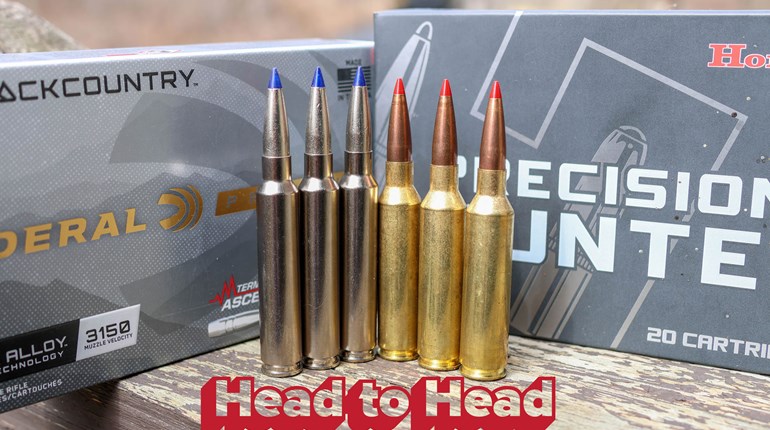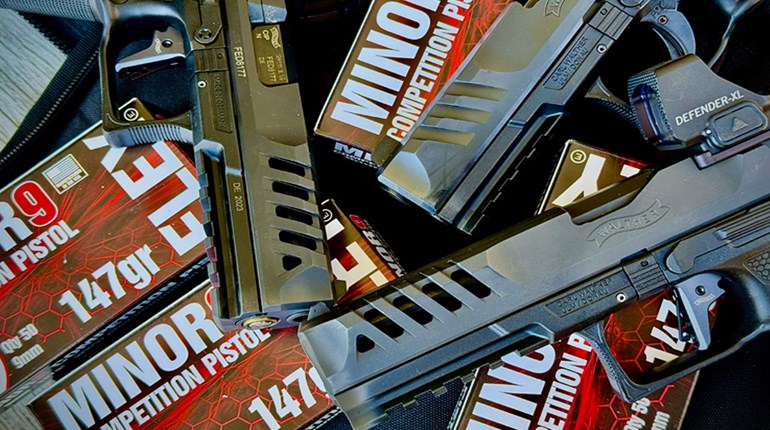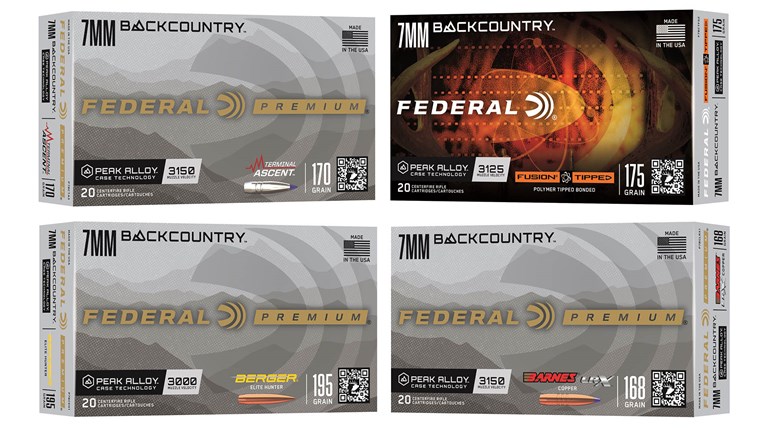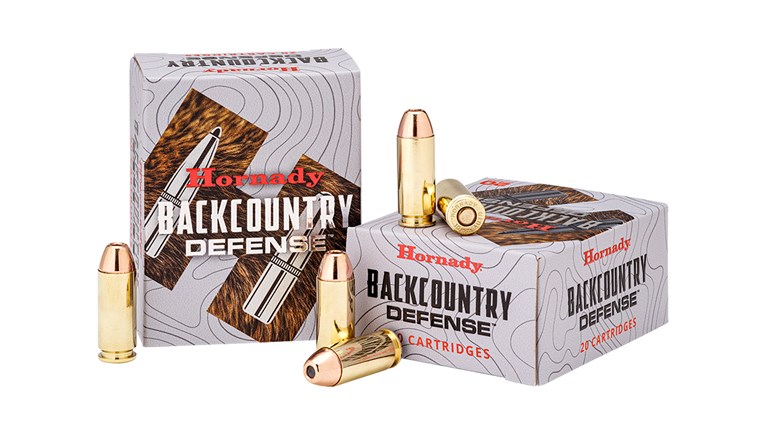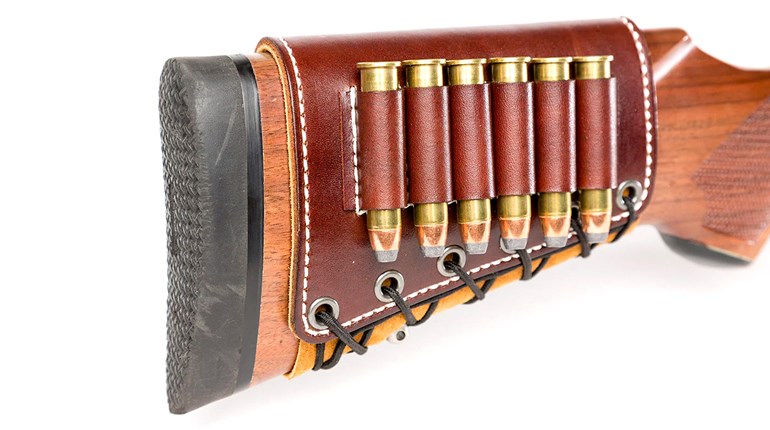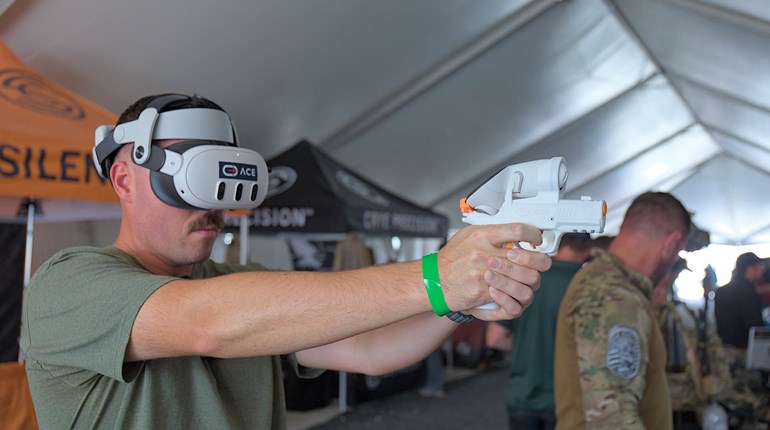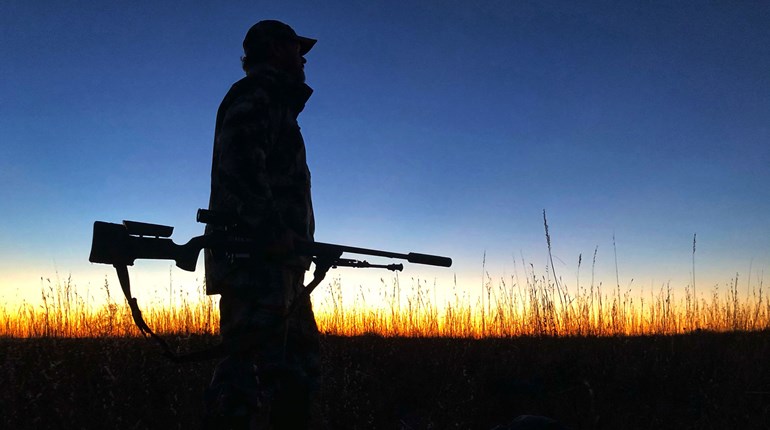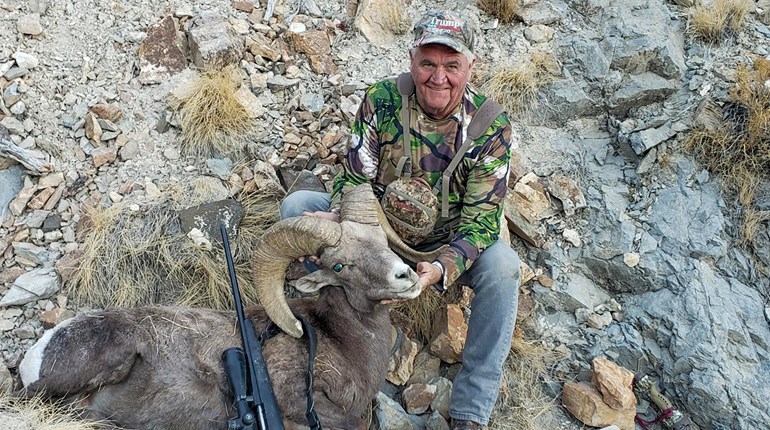
There is no denying the incredible impact that the Holland & Holland Belted Magnum cartridges have made on the hunting and shooting industry. The .375 Holland & Holland Magnum, released in 1912, has been recognized by more than one writer—including the author—as the most versatile of the big-bore cartridges designed for dangerous game. The .300 H&H Magnum was the first .300 Magnum, making its debut in 1925, and won the Wimbledon Cup in 1935 in the hands of Ben Comfort. The cases would be modified by the likes of Winchester, Remington, Norma and others, and would serve as the basis for all of the Weatherby cartridges of the 20th century. But unbeknownst to many firearms enthusiasts, there are other Holland & Holland cartridges, such as the .275 H&H Magnum—released alongside the .375 H&H in 1912—as well as the .244 H&H Magnum, coming along in 1955, and the 2003 releases of the .400 H&H Magnum and .465 H&H Magnum. Of these obscure offerings, the .400 Holland & Holland Magnum is the most popular, and for a number of good reasons.

Where the .375 H&H Magnum is the undisputed king of the mediums, there are times where a hunter of the largest game species could make the case for a bit more bullet weight, in addition to frontal diameter. As the double rifles saw less action after the Second World War—the ammunition was becoming increasing difficult to procure—the bolt-action rifles filled the void. America had embraced both the .375 H&H and .300 H&H in the 1930s and 40s, and American ammunition kept those cartridges alive. But as Winchester released their own line of magnum cartridges, based on the belted H&H design, the new .458 Winchester became increasingly popular among the professionals, as the cartridge was modeled on the classic .450 NE—a stopping cartridge relied upon for decades. So with the majority of ammunition being American, the .375 H&H and .458 Winchester were the most readily available cartridges for those headed on safari, until the late 1980s.
 .300 H&H Magnum, .375 H&H Magnum and .400 H&H Magnum
.300 H&H Magnum, .375 H&H Magnum and .400 H&H Magnum
In 1988, Remington announced the release of their .416 Remington Magnum, based (technically) on the 8mm Remington Magnum, though the resemblance to the .375 H&H Magnum is uncanny. That same year Federal Premium brought back the factory loads for the .416 Rigby, and shortly thereafter Weatherby spiced things up with their own .416 Weatherby Magnum. Four-sixteen mania was in full swing, and the safari guns had hot barrels. Fifteen years later, Holland & Holland jumped into the mix, this time using the .411-inch-diameter bullets to stake their claim in the lineup of lower .40-cartridges. The .400 H&H Magnum uses the same belted design as the .375 H&H and .300 H&H use, maintaining the 2.85-inch case and 3.600-inch overall cartridge length. To ensure the same smooth feeding of the older siblings, Holland & Holland use a slight eight-degree shoulder, and has a neck measuring 0.684 inches, so there is plenty of neck tension. Holland & Holland decided on the same 400-grain bullets common to the .416s, however the smaller diameter will yield a higher sectional density (SD) value. The .400 H&H bullet has a SD value of .338, with the 416 bullet comes in at .330, and the .423-inch-diameter of the .404 Jeffery comes in .319. Does this marginal difference show itself in the field? It might, as a higher sectional density is often correlated to deeper penetration.

The .400 H&H has a muzzle velocity of 2300 fps, generating 4,700 ft.-lbs. of energy at the muzzle. While developing less energy than that of the lineup of .416s (which better that velocity by 100 fps) it is more than enough to properly handle dangerous game. So why hasn’t the .400 Holland & Holland become the household name that its considerably older family members did? I think this attributed to availability. Yes, Holland & Holland is an esteemed manufacturer of fine firearms, but I feel very comfortable saying that the majority of rifles chambered in both .300 H&H Magnum and .375 H&H Magnum have been American, and by far, American ammunition for both of those cartridges ensured their survival. The .400 Holland & Holland Magnum (and the .465 H&H) has not fared so well. Yet it remains a perfectly viable cartridge, delivering a time-tested ballistic performance, and has been chambered in more than a few Dakota Model 76 rifles here in the U.S.

At the Safari Club International convention, I chatted about the .400 H&H with E. Duke McCaa, co-owner of Gulf Breeze Firearms in Florida, and he pointed me to his son ‘L.D.’, who not only co-owns Gulf Breeze with his dad, but serves as the U.S. Managing Director of Westley Richards & Company. Both L.D. and his father are passionate about the .400 H&H Magnum, having sold a good number of Dakota rifles so chambered.
L.D. McCaa had this to say regarding the 400 H&H Magnum: “Since the late 90's early 2000's, my dad and I were the country's largest dealer of Dakota Arms rifles that were made in Sturgis, SD. The majority of the rifles we sold were chambered in .375 H&H Magnum and .416 Rigby. Dad probably claims he found out about the cartridge before I did, regardless, we thought the .400 H&H was cool because it split the difference between these two cartridges. You got milder recoil with the bigger wallop of the .411-inch caliber bullet. The cartridge was also a good fit with Dakota Arms' Model 76, as Dakota Arms made 6 different sized actions then and one dedicated to the .375 H&H Magnum family of cartridges. In Dakota Arms' ‘Safari’ or ‘African’ models you could get four down in the magazine with enough room to close the bolt on a chambered round, giving you five rounds total.
At the end of the day, it looked like a cool cartridge on paper and we thought it would help us sell some more rifles. This was right around 2008 to 2010 and was when Barnes Bullets was bought out by CEREBUS who also owned Remington and Dakota fell under that umbrella.

Barnes was releasing factory loaded ammo then and made a run of brass with proper ‘.400 H&H Magnum’ headstamps and made both 400gr TSX and Banded Solids in the .411" caliber and we took all they could make.
By rough count we think we probably had around 100 Dakota Arms rifles made that were chambered in .400 H&H Mag. Dad and I both have used it extensively hunting dangerous game in Africa and working with Superior Ammo and Ward Dobler at Dakota Arms, we came up with some good loads in both soft and solids from Woodleigh in Australia.
We had the components from the bullets and brass to the dies made by Hornady, so we pretty much supplied anyone who shot a .400 H&H. That's not that many people though.
Like I said, it is a cool cartridge and, on paper, has benefits over some of the other .400” caliber cartridges. It also has a lot of selling points, from its pedigree to its performance. However, I think it was just 100 years too late to have any real commercial success.”

Where does the .400 H&H Magnum sit, when compared to the field of lower .40-caliber cartridges? I feel it is very close to what Jeffery’s was aiming for with the .404 Jeffery (which I absolutely adore), in that it maintains the same bullet diameter of the .450/.400 3-inch NE, at a slightly higher muzzle velocity, perfectly adapted for a repeating rifle. The .404 Jeffery uses a .423-inch-diameter bullet, for reasons I cannot discover, but the .400 H&H better mimics the .450/.400 3-inch formula. Is the .400 H&H dead in the water? Well, if you want one, you’re going to have to rely on handloaded ammunition, whether you roll your own or get someone to do it for you. I don’t see any future commercial endeavors to bring this to the forefront, but I’ve been wrong once or twice before. I will say this: if I were in Africa and someone handed me a Dakota 76 in .400 H&H, with a couple boxes of ammunition, you’d find me waiting on the back of the cruiser to look for tracks.
Looking for previous installments of our "Behind the Bullet" series? We've got you covered.
• .358 Winchester
• .318 Westley Richards
• .35 Remington
• .405 Winchester
• .350 Remington Magnum
• 400 Legend
• .17 Winchester Super Magnum
• 350 Legend
• .303 British
• 26 Nosler
• 6mm Remington
• .270 Winchester Short Magnum
• 360 Buckhammer
• 30 Nosler
• 7-30 Waters
• .370 Sako Magnum
• .17 HMR
• 6.5 Weatherby RPM
• .327 Federal Magnum
• .450 Bushmaster
• 7mm PRC
• .275 Rigby
• .340 Weatherby Magnum
• .416 Ruger
• 27 Nosler
• .257 Roberts
• 7mm Weatherby Magnum
• .300 PRC
• .350 Rigby Magnum
• .450 Nitro Express
• .17 Hornet
• 7mm STW
• 6.8 Western
• .375 Ruger
• .223 Remington
• 6.5x55 Swedish
• .416 Remington Magnum
• .300 Winchester Short Magnum
• 28 Nosler
• 6.5 PRC
• .22 WMR
• .458 Winchester Magnum
• .22 Hornet
• .280 Ackley Improved
• .240 Weatherby Magnum
• .458 Lott
• .264 Winchester Magnum
• .348 Winchester
• 33 Nosler
• .260 Remington
• .30-30 Winchester
• .416 Rigby
• .358 Norma Magnum
• .22 LR
• 7mm-08 Remington
• 8mm Remington Magnum
• .338 Federal
• .224 Valkyrie
• .338-06 A-Square
• 9.3x62mm Mauser
• .257 Weatherby Magnum
• .45-70 Government
• .300 H&H Magnum
• .25-06 Remington
• .30-06 Springfield
• 6.5 Creedmoor
• .300 Remington Ultra Magnum
• 7mm Remington Magnum
• .470 Nitro Express
• .280 Remington
• .300 Winchester Magnum
• .270 Winchester
• .222 Remington
• .45 ACP
• .404 Jeffery
• .44 Remington Magnum
• .41 Remington Magnum
• .243 Winchester
• .338 Winchester Magnum
• .357 S&W Magnum
• 6.5-284 Norma
• 8x57 Mauser
• .38 Smith & Wesson Special
• 7x57mm Mauser
• 9mm Luger
• .35 Whelen
• .454 Casull
• .375 H&H Magnum
• .45 Colt
• .22-250 Remington
• 10mm Auto
• .308 Winchester












